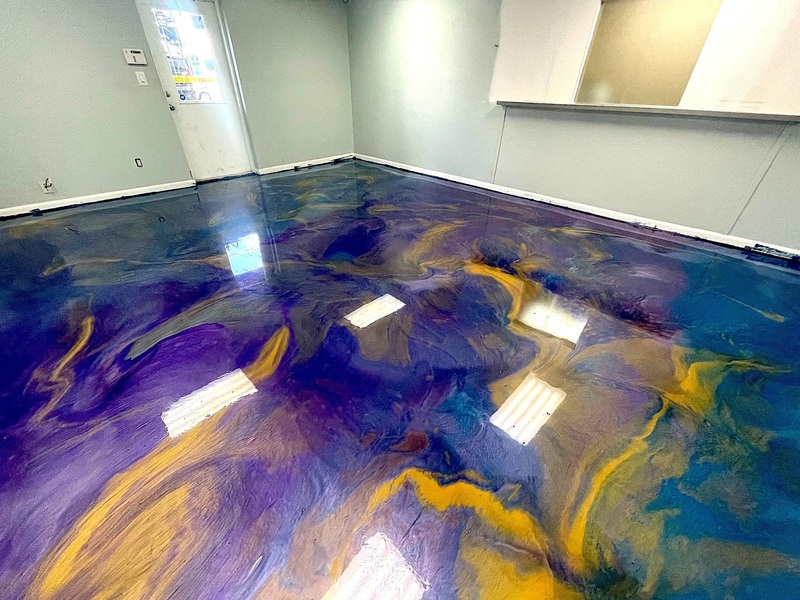Advanced Welding Inspection Service for Engineering Applications
Ultimate Guide to Installing Durable Epoxy Floors in Residential Spaces
When it concerns transforming property spaces with resilient epoxy floors, a methodical strategy is crucial. From choosing the proper epoxy flooring system to meticulously preparing the surface and executing a perfect application, every action plays a crucial role in making certain a lasting and visually enticing outcome. However, there's one aspect typically forgot that can considerably affect the durability and quality of the epoxy floor. By resolving this important element at an early stage, you can protect your financial investment and appreciate a smooth epoxy flooring that stands the examination of time.
Picking the Right Epoxy Floor Covering System
Selecting the suitable epoxy floor covering system is a crucial step in making certain longevity and efficiency in household rooms. Epoxy floor covering provides longevity, simple maintenance, and aesthetic charm, making it a popular option for residential applications. When picking an epoxy system, variables such as the kind of epoxy, level of durability called for, layout choices, and budget plan restrictions must be taken into consideration.
There are numerous kinds of epoxy floor covering systems readily available, consisting of water-based epoxy, solvent-based epoxy, and 100% solid epoxy. 100% strong epoxy is the most resilient choice, suitable for high-traffic locations in residential rooms.

Preparing Your Residential Area
When considering the installment of resilient epoxy floorings in household spaces, ample prep work of the area is fundamental to ensuring a effective and long-lasting application. The first step in preparing your household space for epoxy flooring is to completely clean the surface area.
These need to be filled and leveled to produce a smooth and also surface area for the epoxy coating to be applied. Furthermore, check for dampness issues as too much dampness can create the epoxy to bubble or peel. Welding Inspection Service.
Finally, ensure correct ventilation in the area throughout the installment procedure to enable the epoxy fumes to dissipate. Adequate preparation of the property area sets the foundation for an effective epoxy floor covering application.
Applying Epoxy Covering
To begin the process of using epoxy finishing, completely website here blend the epoxy resin and hardener according to the supplier's instructions. It is essential to follow the advised blending proportions precisely to make sure the epoxy cures correctly and achieves optimum longevity. As soon as the epoxy elements are blended, put the mix onto the ready floor surface area in a bow pattern.
Making use of a roller with a medium-nap cover, spread out the epoxy equally over the flooring, functioning in convenient sections to avoid the epoxy from drying out too check my source quickly. Be certain to back-roll the used epoxy to get rid of any pools or uneven locations, ensuring a constant and smooth coating.

Enable the epoxy finishing to heal according to the producer's instructions before continuing with any type of additional actions to make sure a long lasting and lasting surface.
Ensuring Correct Treating and Drying
Efficient curing and drying processes are important to achieve the preferred sturdiness and long life of epoxy floorings in household spaces. Proper healing entails providing the epoxy covering enough time to solidify and bond totally to the substrate.
Correct air flow assists the epoxy layer to cure consistently and stops any kind of issues like bubbling or irregular drying. It is recommended to follow the supplier's guidelines for curing and drying out times to ensure ideal outcomes and make best use of the longevity of the epoxy flooring in household setups.

Extending and preserving Epoxy Flooring Life-span
Correct upkeep methods play an essential duty pop over to this web-site in prolonging the life expectancy of epoxy floors in domestic setups. Normal cleaning is essential to stop dust and particles from scratching the surface of the epoxy flooring.
To even more safeguard the epoxy floor, take into consideration applying a brand-new overcoat every couple of years, especially in high-traffic areas. By adhering to these upkeep ideas, home owners can guarantee their epoxy floors remain long lasting and aesthetically appealing for years to come (Welding Inspection Service).
Conclusion
In verdict, setting up durable epoxy floors in residential rooms needs mindful consideration of the epoxy flooring system, thorough preparation of the space, correct application of the epoxy finish, and making certain appropriate treating and drying processes. By complying with these actions vigilantly, house owners can attain a aesthetically attractive and lasting epoxy floor that enhances the durability and aesthetics of their living rooms.
When it comes to changing property areas with resilient epoxy floors, a systematic approach is vital. When choosing an epoxy system, variables such as the kind of epoxy, level of durability called for, layout choices, and budget plan constraints have to be considered.
There are numerous kinds of epoxy flooring systems available, consisting of water-based epoxy, solvent-based epoxy, and 100% strong epoxy.When thinking about the installation of long lasting epoxy floorings in domestic spaces, sufficient prep work of the location is essential to making sure a resilient and successful application.To begin the process of applying epoxy covering, thoroughly blend the epoxy material and hardener according to the manufacturer's guidelines.